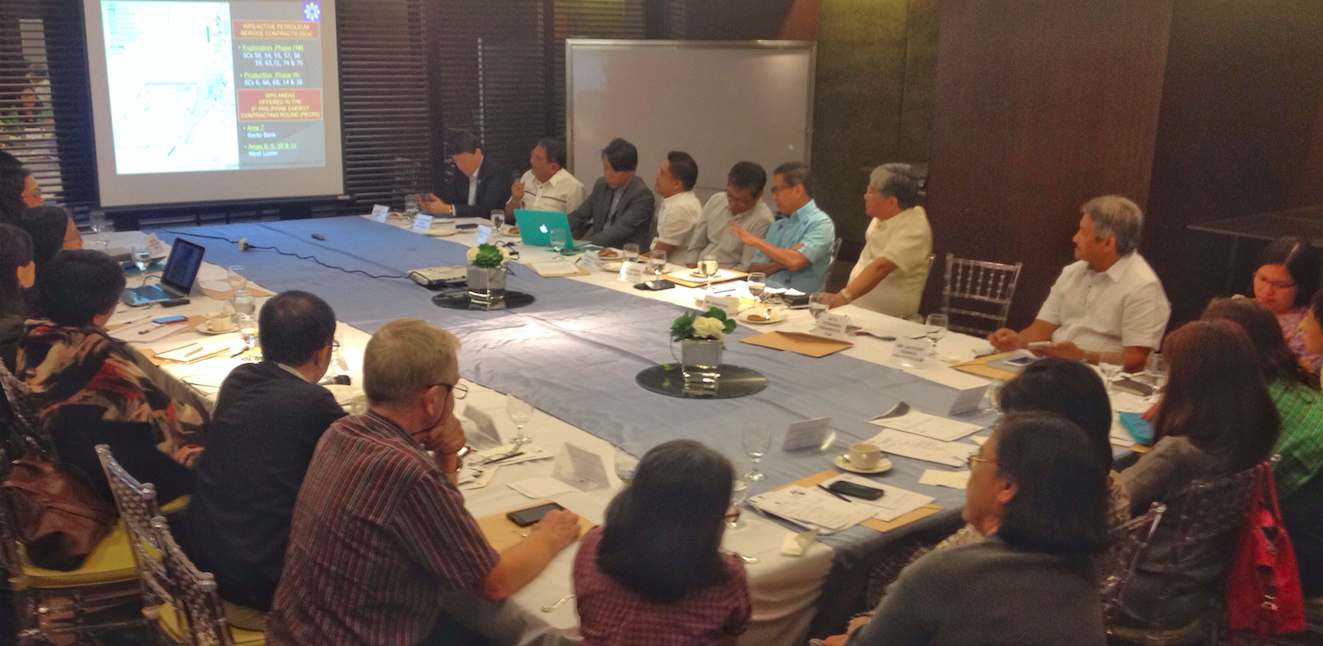
ASTORIA PLAZA, Pasig City – China’s nine-dash line is ambiguous, causing confusion for the energy development players from South China Sea littoral States, according to Lucio Pitlo III, a lecturer of International Relations at the De La Salle University and of the Chinese Studies Program of Ateneo de Manila University, at a roundtable discussion on oil and gas.
Citing published sources which gave divergent estimates of the potential oil and gas reserves in the area, Pitlo said “most of these fields are clustered near coastal areas - near Palawan, offshore Sabah, Sarawak, offshore Vietnam.” He continued by saying “Some of these areas are considered uncontested. However, the fact that the nine-dash line remains without any coordinates (means) it remains to be seen whether those (areas) … are really uncontested in the eyes of Beijing.”
However, despite the unresolved jurisdictional disputes and even with the pending arbitration case filed by Manila, unilateral upstream activities by other states continue.
The problems caused by the nine-dash line claim were affirmed by Director Rino Abad of the Energy Resource Development Bureau of the Department of Energy by saying that “The most important issue would be whether the waters enclosed by (the nine-dash line claim) encroach on the 200-nautical mile exclusive economic zone of the Philippines in the West Philippine Sea.”
But not only is the Philippines affected. Dir. Abad added that “About 80 percent of the EEZ in Sabah and Sarawak facing the South China Sea for Malaysia; for Vietnam, about 50 percent of the total EEZ; for Indonesia, 30 percent of the EEZ facing the South China Sea. These are the areas where they have the largest gas fields in Southeast Asia”.
On the other hand, Sebastian Quiniones of the Petroleum Association of the Philippines (PAP) said: “There are also good examples of joint development of energy resources in disputed maritime areas. We have seen that between Malaysia, Brunei, and others. So our policy-makers should seriously consider if such arrangements are beneficial to the Philippines and will promote national interest.”
As these alternatives are being discussed, he proposed that “the leadership of the Philippines should also see how exploration, development, and production of Philippine petroleum resources may be pursued within undisputed areas both onshore and offshore, including the exploration of the Benham Rise.”
Quiniones also acknowledged that there is a need to improve the fiscal regime and ease of doing business, as well as strengthen coordination between private sector and concerned maritime agencies to respond to challenges to Philippine-sanctioned upstream activities.
The roundtable discussion on oil and gas was organized by the Asia Pacific Pathways to Progress Foundation, Inc. (APPFI), the University of the Philippines Institute of Maritime Law of the Sea (UP IMLOS), and the Petroleum Association of the Philippines (PAP) last February 18.
It is part of a series of RTDs which aims to gather stakeholders to discuss major policy issues in Philippines-China relations. ###
